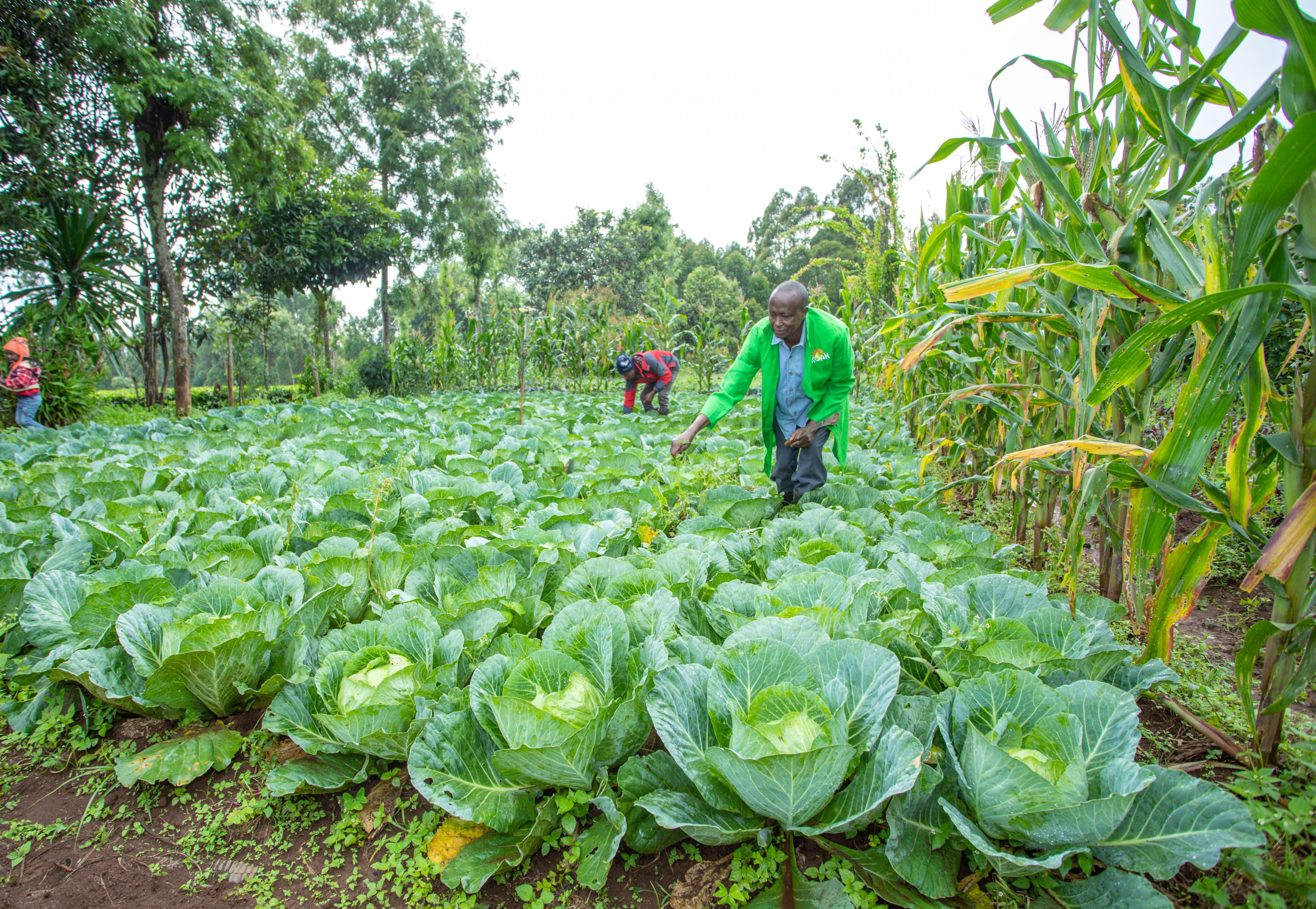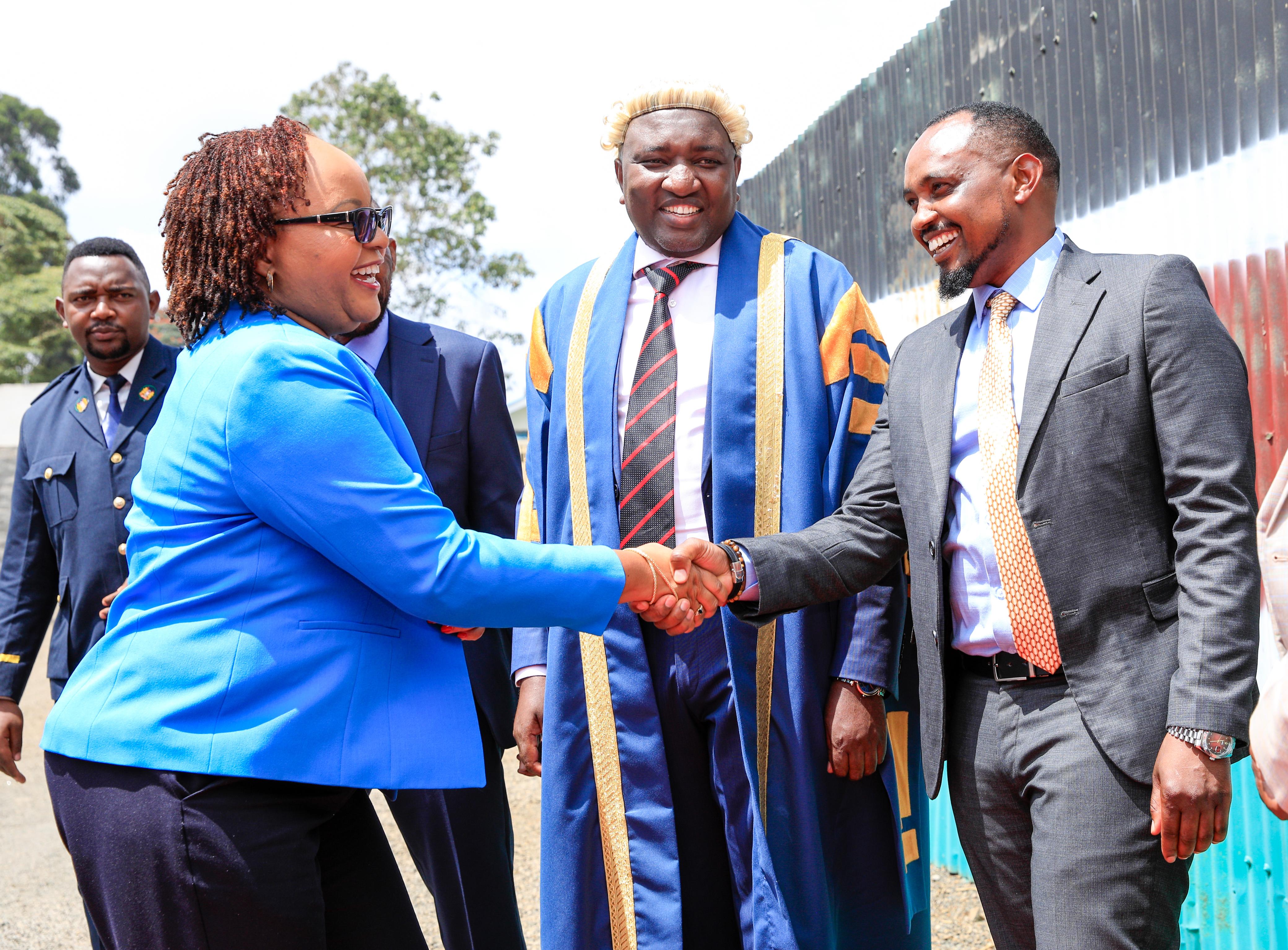
 A farmer working on a vegetable farm in Kimbimbi, Kirinyaga County./ALICE WAITHERA
A farmer working on a vegetable farm in Kimbimbi, Kirinyaga County./ALICE WAITHERASince 2017, the Gross Domestic Product Kirinyaga County rose from Sh114.9 billion to Sh190.79 billion in 2024.
The county has seen the rise of new rice mills, flour mills, fish hatcheries, eco-tourism lodges, and value-addition hubs that have created thousands of jobs and strengthened the local economy.
The county’s economic growth rate currently stands at 5.4 per cent, surpassing the national average of 4.9 per cent.
The poverty index has also dropped from 23 per cent to 21 per cent, lifting about 52,000 households out of poverty.
Governor Anne Waiguru said the gains have been occasioned by a deliberate policy shift towards inclusive and locally anchored development.
Waiguru, who gave the state of the county address at the county assembly on Tuesday, said her administration has cultivated a fertile environment for investments, unlocking growth across diverse sectors.
“The policy shift we have effected is driving the county into becoming a hub for rural enterprise and innovation,” she said.
Waiguru said strategic infrastructure upgrades, streamlined licensing procedures, and targeted support for small and medium enterprises have made the county a magnet for investors seeking stability, opportunity and community impact.
To support industrial investment in Kirinyaga, the county administration has successfully spearheaded the recovery of more than 800 acres of public land that had been illegally grabbed.
She said the recovery of land was not just an administrative milestone but a turning point for Kirinyaga’s development as the lands now stand ready to serve future generations.
“The bold exercise aims at returning the lands to rightful community use for schools, hospitals, housing projects and agricultural development. It’s a move that directly touches the lives of ordinary citizens, reaffirming that the county’s progress must serve the people, not private interests,” the county chief affirmed.
To attract investors, the county has invested deliberately in building and maintaining an extensive network of roads, bridges and urban infrastructure to open up our county for trade, agriculture and investment.
To catalyse industrial growth and expand market access, Waiguru explained the county has prioritised the development of the upcoming Sagana Industrial City that comprises an Export Processing Zone (EPZ), Special Economic Zone (SEZ), the Affordable Housing component and a sports complex.
She said the transformation has decongested the urban centres and elevated the day-to-day experience for traders, commuters and residents.
“Through strategic investment in urban infrastructure, we have laid 118,550 square metres of cabro and upgraded drainage systems across seven major towns that include Kagio, Sagana, Kagumo, Kerugoya, Kianyaga, Kutus and Wang’uru,” Waiguru said.
“You can bear me witness, our towns were once muddy, dusty and poorly drained. Today, Kirinyaga is rewriting that story.”
Cumulatively, the county has graded 7,151.5 kilometres and gravelled 2,265.5 kilometres across all subcounties, ensuring year-round connectivity for farmers, traders and schoolchildren.
 Governor Anne Waiguru with speaker Muteti Murimi and an MCA at the Kirinyaga county assembly on November 11, 2025/HANDOUT
Governor Anne Waiguru with speaker Muteti Murimi and an MCA at the Kirinyaga county assembly on November 11, 2025/HANDOUT“Once fully operational, the industrial city is projected to create more than 10,000 direct and 170,000 indirect jobs, significantly boosting household incomes and reducing unemployment in the county,” she noted.
She disclosed that 63 potential investors have so far expressed interest to put up factories at the park with tomato and avocado processing having already secured committed investors.
The county is in the process of acquiring two new firefighting trucks that will be stationed at the newly constructed modern fire station at Kutus to enhance fires response.
It has also acquired and deployed 75 waste collection skips and two skip loaders to enhance waste collection and transportation.
“These efforts have yielded tangible results, including an 85 per cent reduction in visible urban waste, cleaner towns and growing community awareness on sustainable waste management,” the governor said.
Waiguru said through the Wezesha Kirinyaga Programme, more than 100,000 have directly benefitted from multiple agricultural value chains, including tomato, rice, dairy, poultry, coffee, avocado, apiculture, aquaculture, goat and pig farming.
The county has supported 804 farmers’ groups with Sh253 million, and an additional 19 Farmers’ Producer Organisations provided with Sh266 million to strengthen production and marketing.
The county has established 20 multivalue chain Saccos in every ward and supported them with Sh21 million for office setup, farmer mobilisation and financial services to enhance access to affordable credit and markets.
In healthcare, the administration has invested in expanding access to basic primary health services by operationalising new health centres across the county thus reducing travel time and healthcare-related costs for thousands of Kirinyaga residents.
Apart from operationalising the 341-bed Kerugoya County Referral Hospital, the county has hired more than 150 health workers to fill critical gaps created by facility upgrades and reinforced service delivery at the referral hospital and subcounty hospitals.
The county is also upgrading Kianyaga, Kimbimbi and Sagana to
level 4 hospitals.
The county has also introduced new specialised services in its hospitals, among them, orthopaedic surgery, urology, oncology, neurology and epidemiology. Previously, residents had to travel outside the county to seek these services.
Waiguru also disclosed the county has fully digitised revenue collection through the Kiri-pay system, sealing revenue leakages and making it easier for citizens to pay for single business permits, licenses and cess fees.
The county recorded a steady rise in own source revenue from Sh344.4 million in 2017 up to Sh852.3 million in 2024.
As a result, Waiguru said her county has consistently ranked well among the top performers nationally in development budget absorption as recognised by the Office of the Controller of Budget.
Instant Analysis
The county has seen the rise of new rice mills, flour mills, fish hatcheries, eco-tourism lodges and value-addition hubs that have created thousands of jobs and strengthened the local economy. Waiguru said her administration has cultivated a fertile environment for investments, unlocking growth across diverse sectors. Waiguru said strategic infrastructure upgrades, streamlined licensing procedures and targeted support for small and medium enterprises have made the county a magnet for investors seeking stability, opportunity and community impact.


















